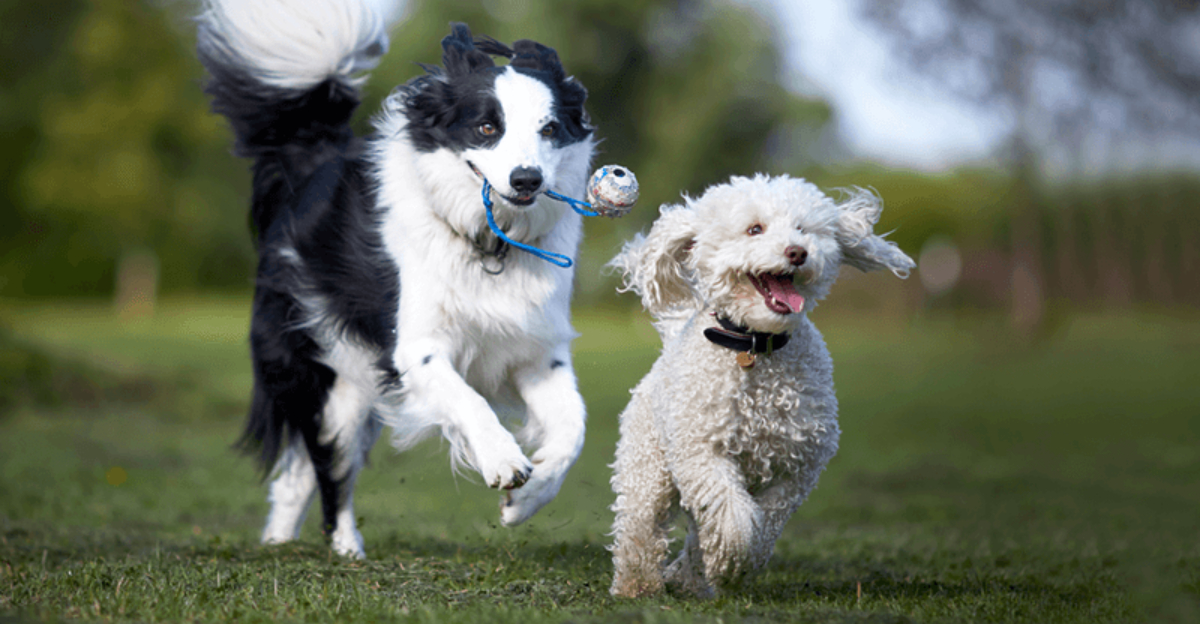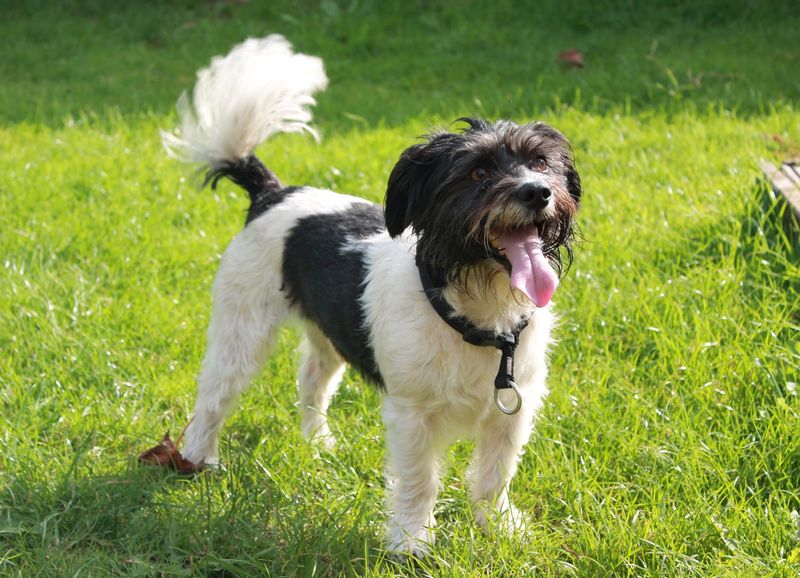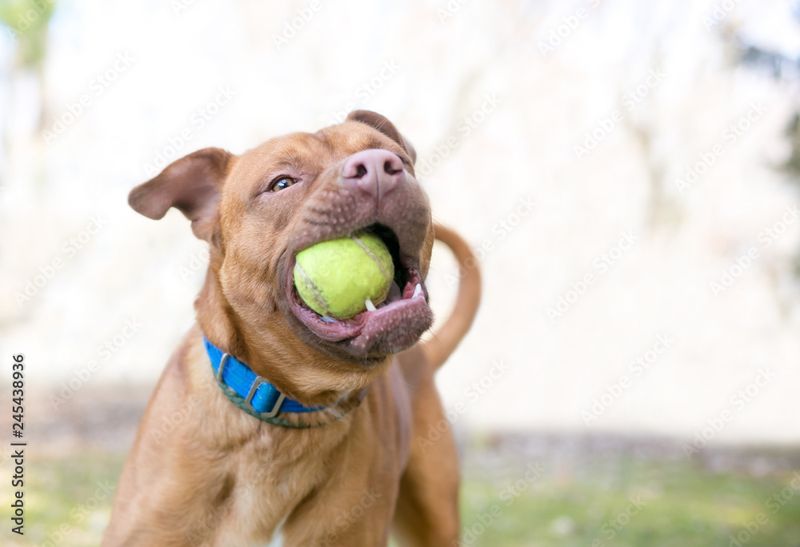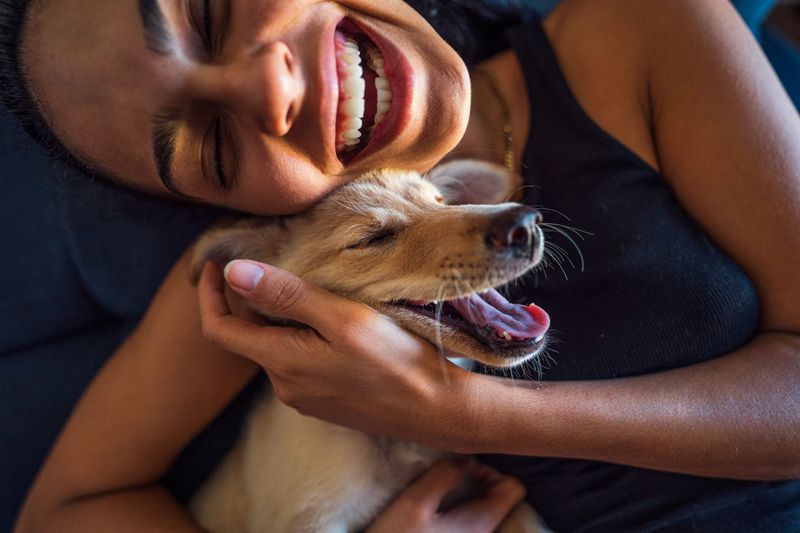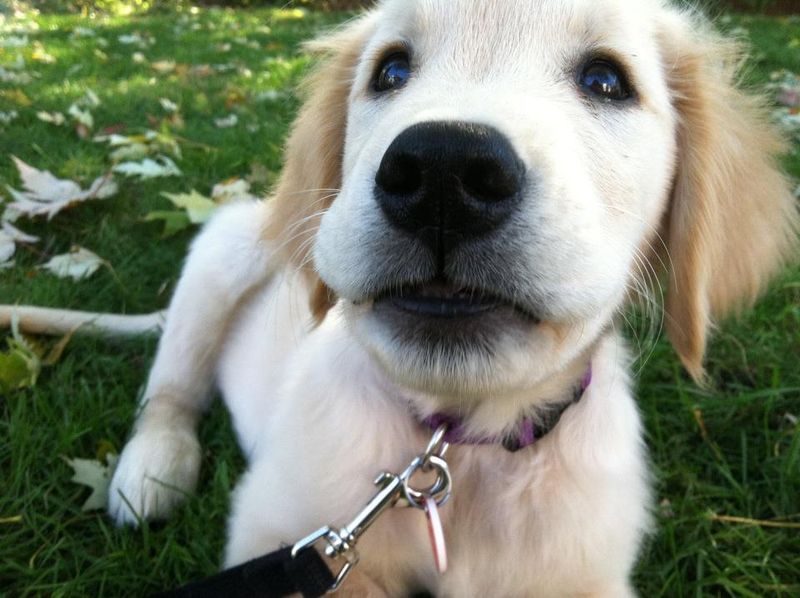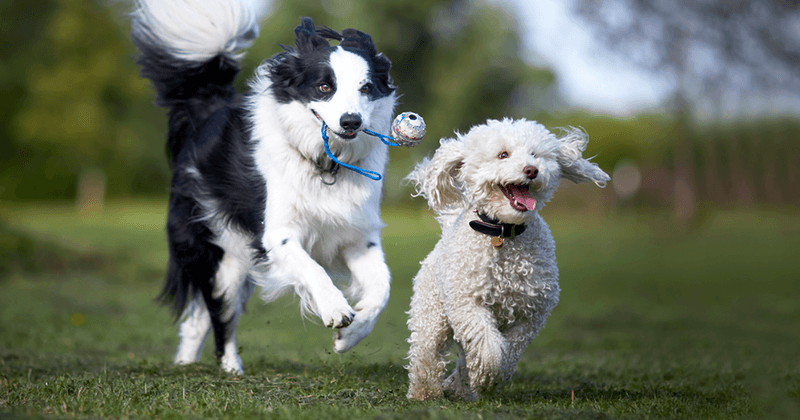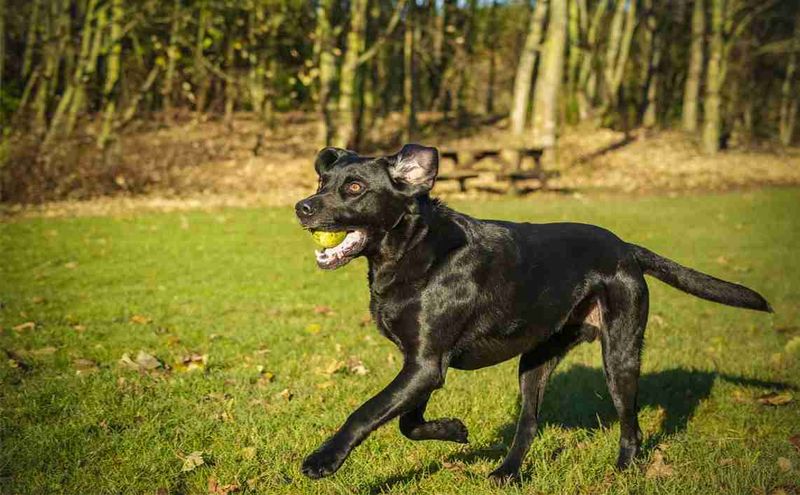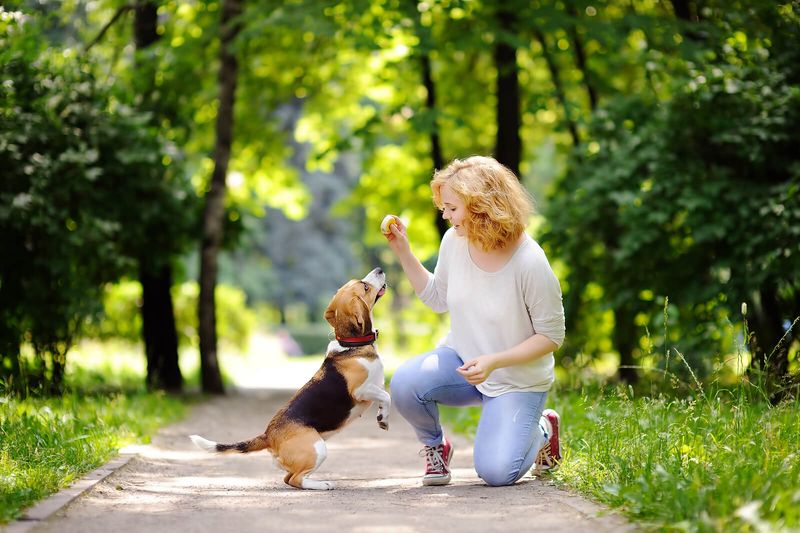Understanding your dog’s happiness is crucial for building a strong bond and ensuring their wellbeing. Dogs communicate their emotions in various ways, and recognizing these signs can help you ensure that your furry friend is living a joyful life. Here are 11 signs that indicate your dog is happy.
The Wagging Tail
Few sights are as heartwarming as a dog with a wagging tail. A tail that wags enthusiastically can be a clear indicator of joy. This motion often signifies excitement and contentment, especially when paired with a relaxed body posture.
When your dog greets you with a wagging tail, it’s their way of saying they’re thrilled to see you. Every wag is a testament to their happiness and love. It’s like a smile that reaches all the way down to their paws.
Did you know? Different wags can mean different things, but an all-round wag is often a universal sign of joy.
Playful Behavior
A playful dog is a happy dog, they say. Engaging in play is not just about fun, it’s crucial for your dog’s mental health. Whether it’s chasing a ball or frolicking with other dogs, playtime brings out the best in them.
Notice how their eyes light up and their movements become bouncy and spirited when they play? This unbridled energy is a sure sign of happiness. It’s their way of expressing excitement and joy for life.
Fun fact: Regular play sessions can strengthen your bond with your dog, making them even happier.
Relaxed Body Language
Observe your dog’s body language, and you’ll see their soul. A relaxed dog exudes happiness through a loose, comfortable posture. When they lounge on the sofa, stretching out without a care, they’re showing pure contentment.
Their eyes may half-close, and their breathing is calm and steady. This serene state indicates that they feel safe and secure in their environment.
Did you know? Dogs often mimic the body language of their human companions, so your own calm demeanor can enhance their sense of peace.
Healthy Appetite
A content dog often has a healthy appetite. When they eagerly anticipate mealtime and enjoy their food with gusto, it’s a sign of wellbeing. Eating with enthusiasm suggests they are both physically and emotionally balanced.
Notice how they wag their tail slightly even while eating? That’s joy expressed in every bite. It’s a moment of simple pleasure for your furry friend.
Interesting tidbit: Dogs are social eaters, so sharing mealtime with them can enhance their happiness.
Affectionate Behavior
Affectionate behavior is a hallmark of a happy dog. Cuddles, kisses, and even following you around are signs of their love and contentment. When they nuzzle against you or rest their head on your lap, they are expressing deep affection.
Such actions reflect a strong bond and trust, indicating that they feel safe and loved. These moments of closeness are cherished by both the pet and owner.
Did you know? Dogs have been companions to humans for thousands of years, and their ability to form bonds is unparalleled.
Bright Eyes
The eyes are the windows to the soul, and this holds true for our canine companions. A happy dog often has bright, sparkling eyes that are full of life. These gleaming orbs reflect their inner joy and curiosity about the world.
When they look at you with those bright eyes, it’s a connection that speaks volumes without words. It shows their engagement and interest in their surroundings.
Fun fact: Dogs use eye contact to bond with their humans, and mutual gaze can increase oxytocin levels, the love hormone.
Sleeping Well
A dog that sleeps well is often a happy dog. Quality sleep is essential for their health, and when they drift into peaceful slumber, it indicates they are at ease.
Notice how they might twitch or wag their tail slightly during sleep? These are signs of a deep, restful sleep, often accompanied by dreams.
Interesting fact: Dogs have a similar REM sleep cycle to humans, indicating their emotional complexity and the importance of restful sleep for happiness.
Friendly with Others
A happy dog is often sociable, eager to interact with other dogs and people. When they greet playmates with a wagging tail and playful bow, it demonstrates their friendly nature.
This willingness to engage in social activities shows their confidence and happiness in their environment. Their social skills are a sign of emotional wellbeing.
Did you know? Dogs have unique play styles, and finding a compatible friend can enhance their social experience.
Alert Ears
Alert ears can be a sign of a happy, engaged dog. When your dog’s ears perk up at the sound of your voice or an interesting noise, it shows their curiosity and alertness.
This keen sense of hearing reflects their enthusiasm for life and readiness to engage with their surroundings. It’s more than just an instinct; it’s a reflection of their active mind.
Fun fact: Different breeds have varied ear shapes, affecting how they express emotions through ear movements.
Healthy Coat
A shiny, healthy coat is often a visible sign of a happy dog. When their fur glistens under the sunlight, it indicates good nutrition, regular grooming, and overall health.
This external glow is not just about looks; it reflects their internal wellbeing and happiness. A nourished dog is a joyful dog.
Interesting tidbit: Regular grooming sessions not only maintain their coat but also strengthen your bond with your dog.
Eager to Please
The desire to please is a common trait in happy dogs. When they eagerly follow commands or perform tricks, it’s a sign of their intelligence and willingness to engage.
This eagerness to make their owner proud reflects their affection and trust. It’s a joyful collaboration between you and your furry friend.
Did you know? Training sessions are not just about obedience; they’re a fantastic opportunity for bonding and boosting your dog’s confidence.
